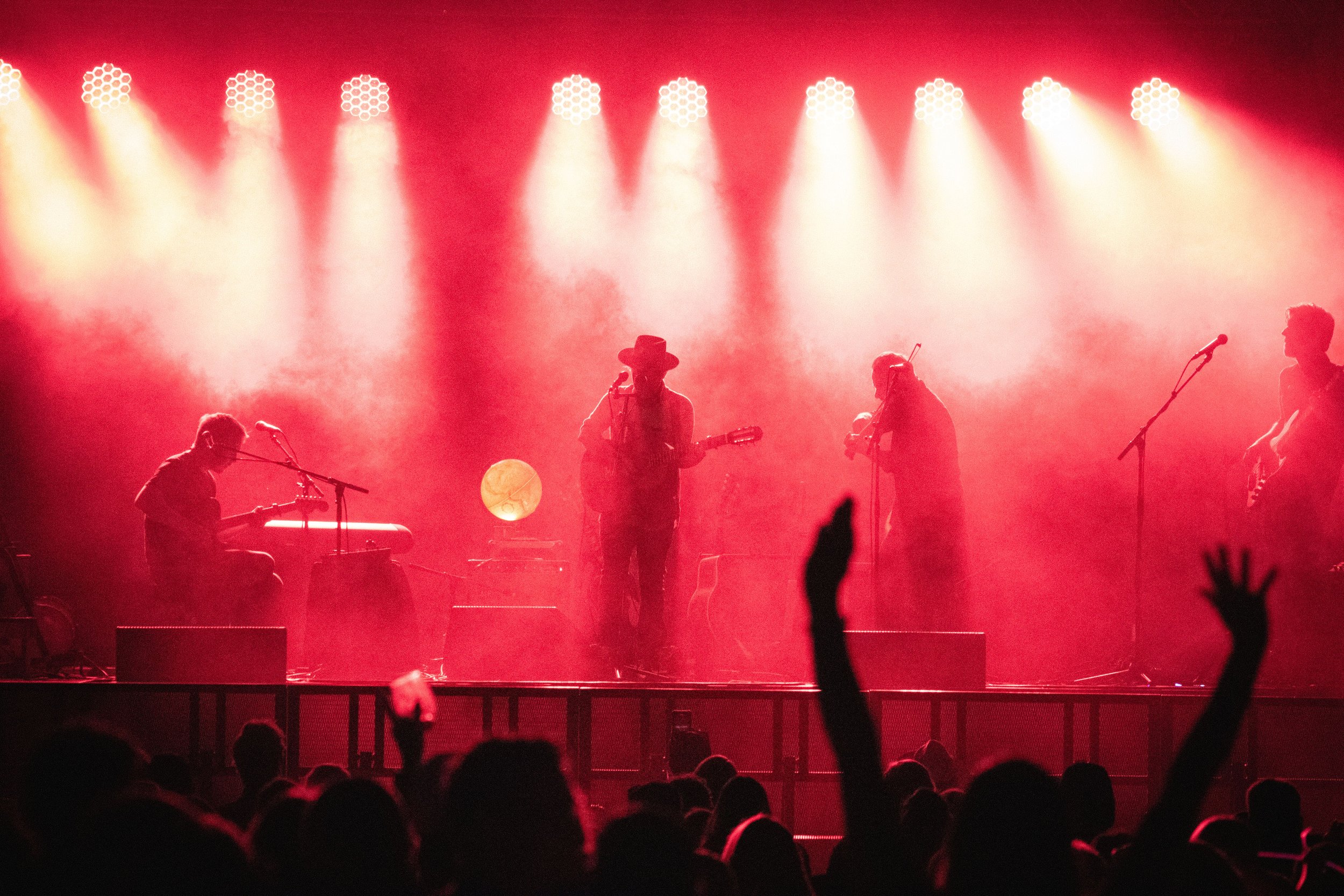How Much Reverb is too Much?
Effects are unique in the audio mixing world because they are the only sound that the audio engineer gets to create somewhat independently from the rest of the mix. The band provides the source of audio for every other channel on the console, but with effects, the engineer can take some creative license and produce something completely unique to the mix.
Granted, that creative palette must fit the style of music and not piss off the band in the process, but the right effects can greatly enhance a mix and even produce a style that is unique.
What is reverb? If you’ve ever been in a large room, like a cathedral, you’ve heard naturally occurring reverb. Reverb is short for reverberation, which is a prolonging of a sound. Natural reverb occurs in rooms where the dry/original sound bounces off of surfaces in the room creating a cascade of reflections or echoes of the original that arrive at the listener at different times. The more times the sound bounces around, the more (and different) reflections are created as the energy dies out over time. The sound of the reverb is changed by bouncing off of different materials and surfaces with varying degrees of coarseness and absorption.
Before the advent of digital effects, rooms were created to produce a specific type of reverb for recording, like Abbey Road Studios, where the Beatles recorded almost all of their music. Reverbs were also created by attaching transducers (devices that convert one form of energy into another, such as converting electrical signals into mechanical movement) to a plate of material–usually metal–to introduce vibrations into the material. The vibrations would reflect internally off the edges of the material and another transducer would convert those complex reflections back into an electrical signal. Placing objects on the material as it was suspended in air would change the reflections to create different effects.
If you’ve ever accidentally kicked an old analog mixing console or guitar amp, you may have heard another mechanical reverb device called a spring reverb. Much like the plate reverb, a transducer vibrates one end of a spring suspended in air and another transducer converts all the reflections from the spring’s internal “bouncing” back into an electrical signal.
Modern digital effects processors use complex algorithms to emulate different rooms and methods for generating reverb. Most digital mixing consoles give the user access to a variety of reverb types, along with other effects.
Why do we want reverb? Humans are built to see in three dimensions, and we also hear in three (or more) dimensions. Basic mixing on a stereo sound system gives us the ability to control the volume of individual channels and where they appear left and right in the mix (panning), but there is a third dimension created with effects, like reverb, that give your mix a feeling of depth. I often mix backing vocals with more reverb than the lead vocal to give the audience a sense of space. They’re typically under the lead as far as volume, but they’re also “behind” the lead because the extra reverb makes it feel like they’re further away, or in the background. Without reverb, the mix can feel flat, or like it’s in your face.
Human ears and brains can only handle so much input coming from a particular source. When there’s too much, like when multiple people are talking to us at the same time, it’s easy for the brain to get confused or even shut down because of overstimulation. Adding panning and reverb to a mix allows the engineer to move individual sources in the listening space, making them appear to come from multiple places, which helps the listener distinguish between the different sounds and reduces the brain’s tendency to be overwhelmed. It also feels more natural, as if the performance is happening in a large space.
While reverbs differ by manufacturer and style, there are some common settings that are good to understand to help you get what you want out of your effects:
Type - This refers to what the digital algorithm is emulating, like a small room, large hall, plate, spring or any other creative description the manufacturer can come up with. Other parameters may be limited by the type of reverb being emulated.
Time/Length/Decay - This is how long it takes for the reflections to die out. It’s usually measured in seconds and/or milliseconds.
Pre delay - The time it takes from the original sound until the first reflections hit.
Diffusion - The density of the reflections, meaning how many reflections are packed into each second of reverb.
Damping/HF Damping - Reduction of the higher frequencies is a common way to make the reverb less “noticeable” in the mix by reducing the effects of sibilance in the reverb. More damping creates a warmer sound.
Wet/Dry - While most reverbs now are mixed into an overall mix as a separate channel, in the old analog days we used to insert them directly onto a channel. That would require having a significant amount of the original (dry) signal coming back from the reverb processor along with the affected (wet) signal. The wet/dry setting was the balance between the two. When reverb is mixed on a separate channel, the fader level controls the overall balance of reverb so we leave the wet/dry setting at all wet.
When I teach sound classes I often get asked about how to do effects. After I show the class how to find and manage effects on their console, I always give them two key pieces of advice:
Play with the effects on the console and get familiar with what each one sounds like and what the parameters do.
Listen to the style of music you’re going to mix (which may be different for each show) and try to pick out what is happening in the mix so you can imitate the style.
There are some cases where we have to limit our creativity. For example, in church services, we don’t want the audio to be a distraction, so a deep, resounding reverb with a 2.4 second ping-pong delay at 70% of the lead vocal level probably won’t let you keep your position as a volunteer for very long. However, adding a 2.4 second reverb with HF damping to the vocals and mixing it in subtly can dramatically increase the warmth of those vocals and create a gentler, more expansive vocal mix. It can also help blend volunteer vocals.
Here are a few more reverb tips:
I use longer reverb times on backup vocals than on the lead vocal, as explained above. I also use a separate reverb processor for the lead vocal so I can change the parameters without affecting the reverb on the other vocals and instruments. Having a nice digital console with lots of effects is helpful.
Some instruments, like saxophone and flute, sound best with a pretty good amount of reverb on them. Most audiences will notice a sax without reverb as sounding out of place.
For faster songs, keep the reverb time down, otherwise, the vocals will start to get muddy as the reverberations pile up. You need time in the song for the reverb to decay between phrases and even syllables.
Play with the settings to change things like EQ and HF Damping as the preferred method. However, if you don’t have time (like in a festival setting), you can EQ the return channels for the reverb to get the desired effect. I often will adjust the amount of HF roll-off on my reverb depending on how it sounds with each vocal.
If you’re mixing an 80’s rock band, you will want a long, bright reverb on the snare drum! Again, listen to the original mixes to get a better idea of what reverb is appropriate.
Don’t mix reverbs. If the sax player has their own reverb processor on stage, don’t add to it.
For most styles of music, reverb is a subtle enhancement rather than a stylistic addition. However, there are some bands and styles that pile on the reverb. Usually the band will tell you when that’s appropriate or ask for a specific type of reverb.
When the music stops and a vocalist starts talking, mute the reverb. It’s pretty distracting when people are just speaking! I put my effects return on a VCA/DCA on the main fader bank so I can get to it quickly between songs. It’s also less distracting to fade it out than to hit the mute button, unless you have really good timing.
While reverb and delay are related (reverb is technically just a bunch of delays mixed together), don’t confuse them or substitute them. It’s a great enhancement to a mix to have a good reverb and a subtle, long, tap delay on the lead vocal. That’s a common technique across many genres of music. In fact, it makes it quick and easy when the band goes into an old-time rock song to get the slapback going. Yes, I really can tap that fast. (It’s only 80-140ms.)
Let us know what other types of effects you want help with and we’ll work on it!


